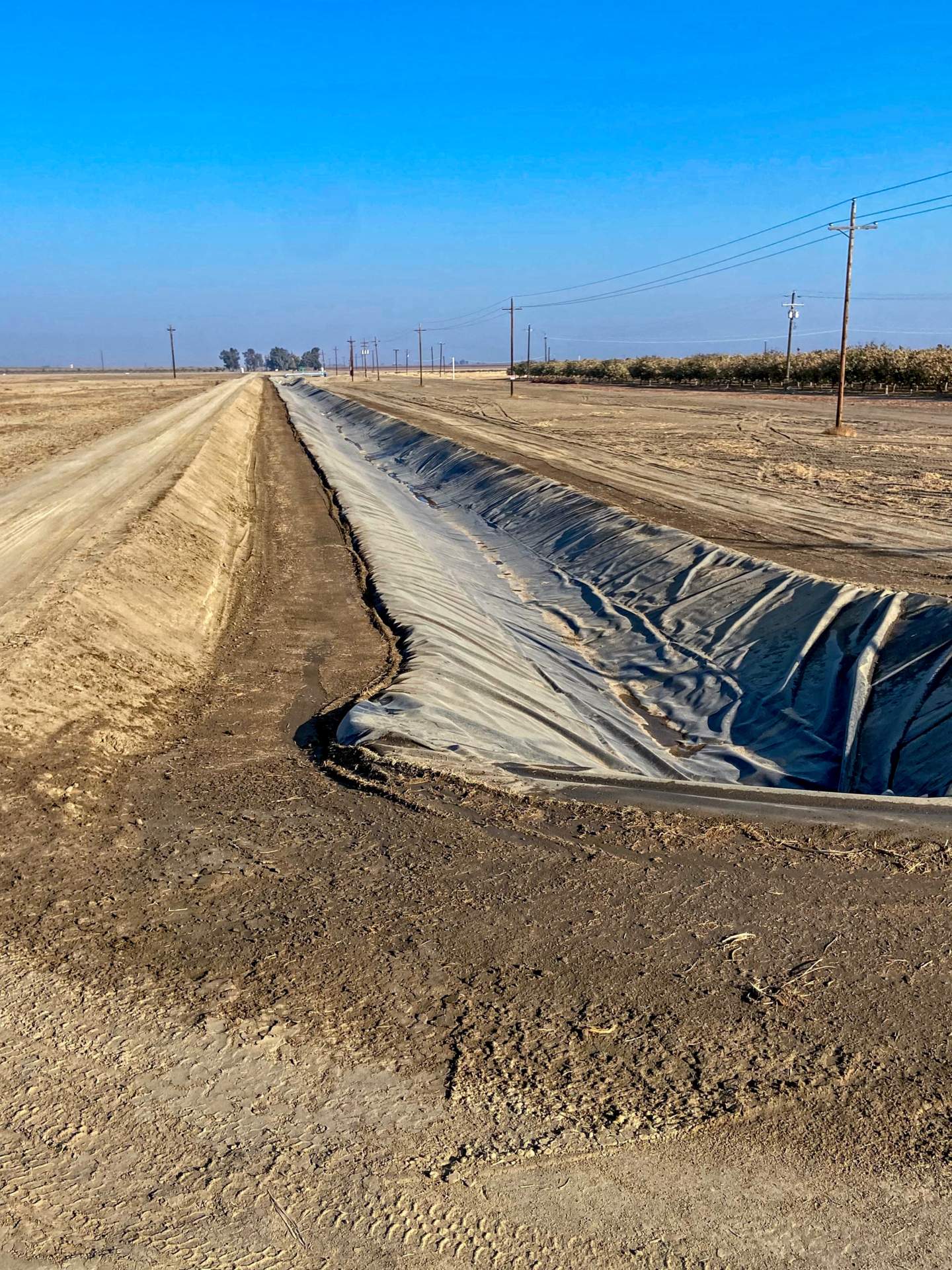Ditches are water movers, and they work more efficiently if they’re lined. A ditch liner speeds up water flow and allows the ditch to carry its optimum volume of water, as well as to last for a long time. Ditch liners are especially designed to suit the narrow width and the purpose of ditches, and there are several options available to choose from to suit your particular ditch application – and choosing can be the hard part.
So, to tune up your ditch for maximum efficiency and durability, here are the three basic tips you should follow to select and install your ditch liner for best results.
You (1) want to select a liner material that will endure for the desired lifetime of the ditch, and (2) you want a liner that maintains the integrity of the ditch against deterioration from water flow, and finally, (3) you want to install the liner properly so it does the best job at meeting these goals.
Tip One – Select a Good Ditch Liner Material
There are several geomembrane liner materials that will work to line a ditch, ranging from flimsier and less costly to more costly and tougher. The very best material is typically reinforced polyethylene (RPE), which offers a flexibility and strength at a reasonable price that is hard to beat. RPE resists tears and punctures, which is obviously important to prevent seepage of the water into the ground through the liner. RPE is tough enough and also resistant enough to chemicals that it finds common usage in the fracking industry and in toxic containment.
Look for RPE made only with virgin resins, for consistency throughout the liner. You’ll choose RPE for its extended resistance to abrasion and also UV exposure. You want its high impermeability and outstanding welding properties.
Tip Two – Durability of the Ditch Liner
Not all ditches are lined, and not all ditches are intended to last a long time – some are a short-term solution to a temporary or occasional need. But if the ditch needs to endure over the years and continue to give good service, you need a liner to prevent soil erosion, to keep the banks from crumbling, and to keep weeds at bay. All of these factors slow down water flow and progressively destroy the ditch. The bottom line is that, the longer lasting and efficient you want the ditch to be, the more focus you’ll place on installing a ditch liner.
A ditch is the most basic method of moving water from one point to another, whether for drainage away from one place, irrigation toward another place, to fill a pond or for other reasons. The investment made in creating the ditch, and your expected need over time, dictate the additional investment you’ll make to preserve the ditch and make it maximally efficient.
Tip Three – Install the Ditch Liner Properly
The ideal liner for any pond, canal or ditch is one welded in the factory, but frequently you’ll need to weld in the field. Correct installation by experienced professionals may be valuable for your project. At Western Environmental Liner, over our more than three decades, we’ve seen numerous installations that may fail to survive the length of time needed to pay for their investment – correct installment is crucial.
A seasoned supplier will be able at the very least to provide specialized equipment to help install the ditch liner most easily. And since every project can be unique, having experienced personnel to make custom recommendations is a value in itself. The way you install the ditch lining will affect its longevity. When exposed, high-quality liners can last from 2 to 20 years, depending on the weight or thickness, and several liners can last over 20 years when buried or protected from degradation.


